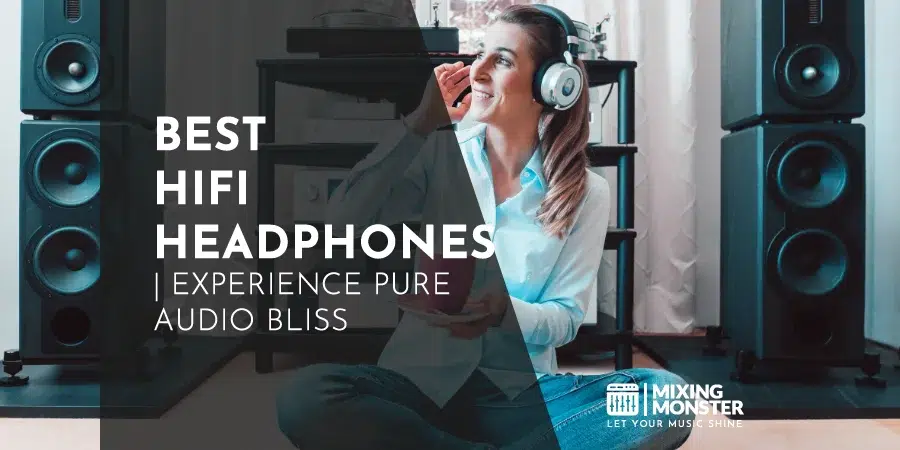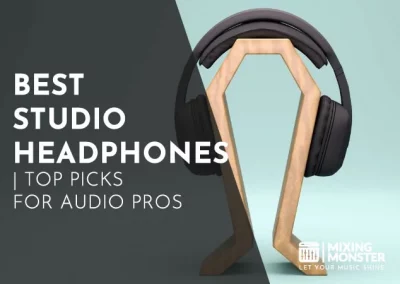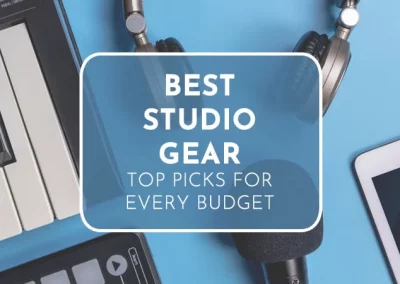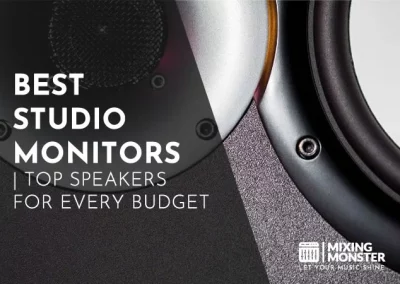Home > Blog > Studio Gear > Music Gear
Disclosure: Some of the links below are affiliate links, meaning that at no additional cost to you, we will receive a commission if you click through and make a purchase. Read our full affiliate disclosure here.
The best hifi headphones deliver sound quality that standard consumer models can’t match. They’re designed for listeners who want accurate audio, long-term comfort, and a durable design.
Hifi headphones reproduce music with minimal distortion, a wide frequency response, and a lot of detail. Unlike mass-market options, they often utilize larger drivers, open-back or closed-back designs tailored to different listening environments, and higher-quality materials that enhance both sound and comfort.
Many models need a dedicated amp or DAC to sound their best. When selecting the best hi-fi headphones, consider impedance, driver type, build, and comfort—these factors all contribute to shaping the overall experience.
We sifted through numerous models to find the best for home listening, portable setups, or even studio use. Up ahead, we’ll lay out our top picks, break down what makes hifi headphones special, and flag the key details to watch for before you buy.
KEYNOTES:
- In this article, you’ll find a comprehensive list of the best hifi headphones on the market.
- Hifi headphones are categorized into 3 sections:
Best Budget Hifi Headphones
Best Midrange Hifi Headphones
Best High-End Hifi Headphones - Each section contains:
5 Hifi Headphones
ordered by price (low > high)
Our Top Picks – Best Hifi Headphones
Best Budget
AKG
K-92
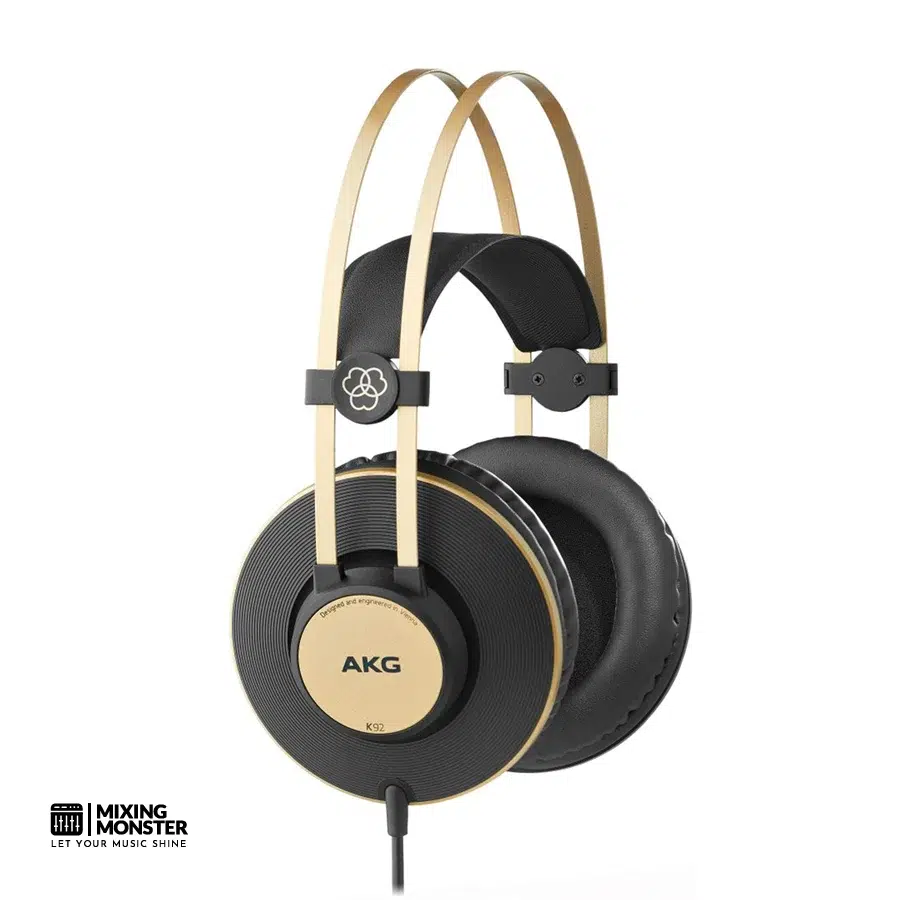
Best Midrange
Meze Audio
99 Classics
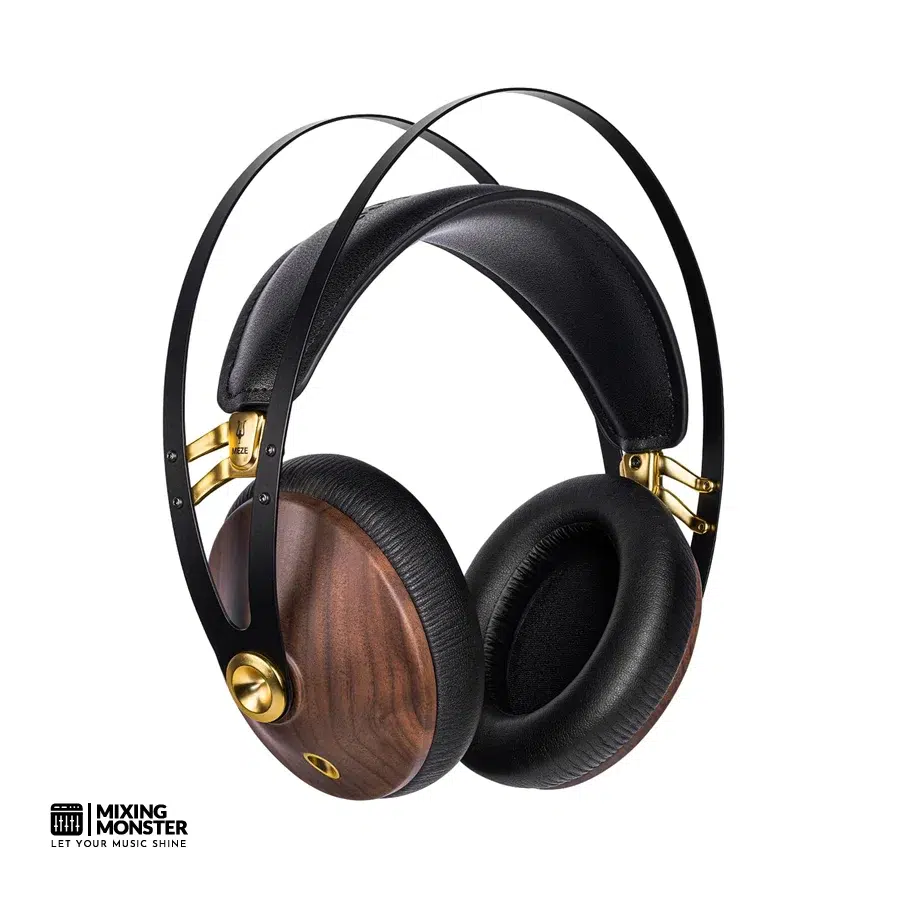
Best High-End
Fostex
TH616
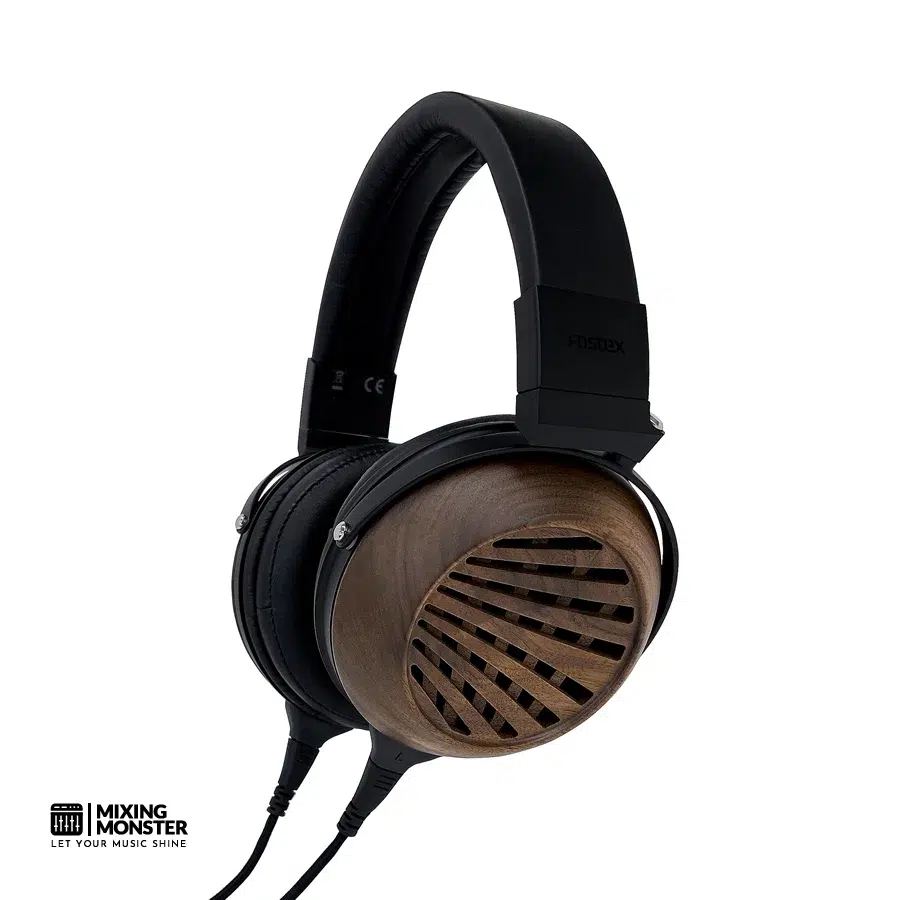
Table Of Contents
1. What Are The Best Hifi Headphones?
Best Budget Hifi Headphones
Best Midrange Hifi Headphones
Best High-End Hifi Headphones
2. What Is A Hifi Headphone?
3. Essential Accessories To Complement Your Hifi Headphones
4. Hifi Headphones Buying Guide
5. Finding Your Perfect Hifi Headphones: Key Takeaways
FAQ

1. What Are The Best Hifi Headphones?
We tested a wide range of models to find headphones that offer accurate sound, a solid build, and comfort that lasts. This roundup highlights the best options for various listening needs, allowing you to find the perfect pair for your setup.
Here Are Our Picks For The Best Hifi Headphones:
Best Budget Hifi Headphones
Best Midrange Hifi Headphones
Best High-End Hifi Headphones
15. Meze Audio 109 Pro
Best For Natural Sound And Long Listening Sessions

Best Budget Hifi Headphones
#1 Behringer HPM1000-BK
Best For Budget-Friendly Everyday Listening
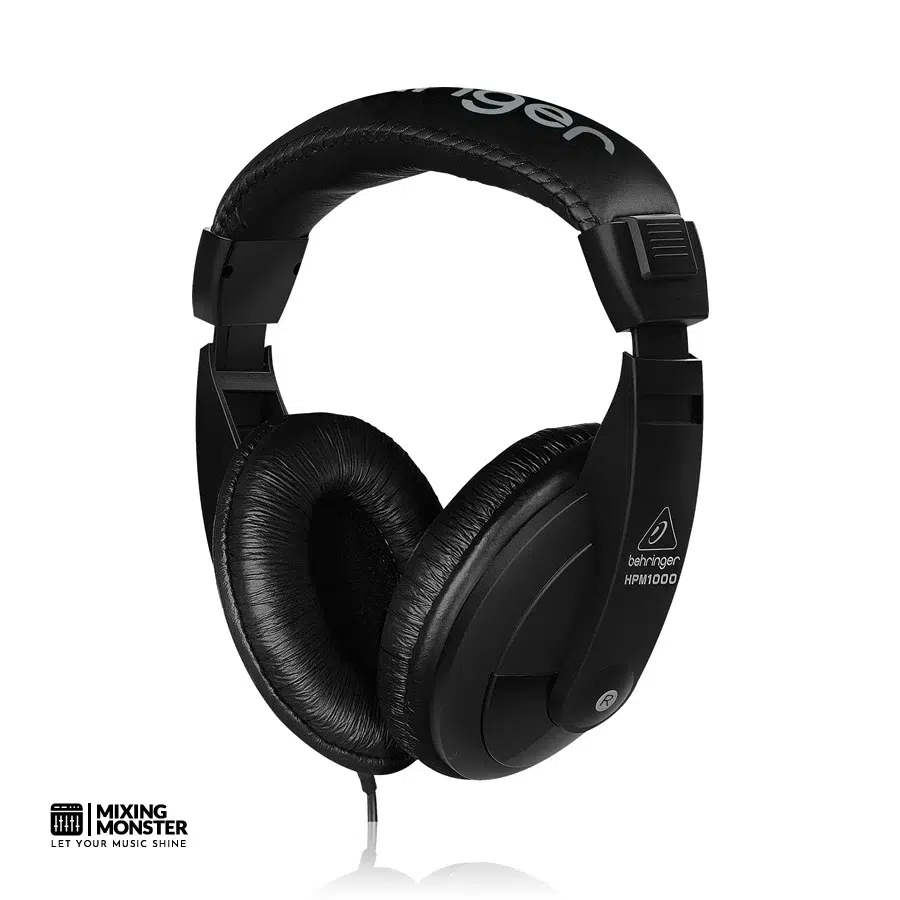
Overview:
The Behringer HPM1000-BK headphones offer a straightforward and affordable option for reliable over-ear headphones that omit unnecessary features. We found them to be lightweight, easy to wear for extended periods, and versatile enough for casual music or basic studio use.
They don’t block outside noise, but the sound quality is surprisingly balanced for the price. These headphones are practical and accessible for anyone seeking a straightforward option.
Pros:
- Comfortable fit with minimal clamping
- Clear sound for the price
- Lightweight and portable
Cons:
- Not much noise isolation
- Basic ear pads
- Feels less durable than higher-end models
Unique Selling Point:
The Behringer HPM1000-BK stands out by offering balanced sound at a rock-bottom price, making it super accessible for anyone watching their budget.
Key Benefits:
- The low price makes it easy to grab a few pairs for various uses.
- The lightweight design helps prevent fatigue during extended sessions.
- Comes with an adapter for broad device compatibility.
Pricing:
| Average Price | ~ $12 |
Review:
When we tried the Behringer HPM1000-BK headphones, the first thing we noticed was how light they felt. The headband doesn’t squeeze your head, allowing us to wear it for hours without any discomfort.
They’re designed for simplicity, which works well for casual use. The sound quality is better than you’d expect at this price. We found the mids and highs clear enough for podcasts, practice, and general music listening.
Bass is present, but it doesn’t overwhelm, making them suitable for a wide range of audio applications. You won’t get the depth of pricier headphones, but as a budget pick, they hold up just fine.
We liked the single-sided cable—it tangles less. The included adapter lets us plug into different gear without any extra hassle. If you’re switching between laptops, mixers, or instruments, that’s handy.
The ear pads feel thin, and the build doesn’t inspire tons of confidence. We wouldn’t count on them for years of heavy daily use, but for light or backup purposes, they’re adequate.
They don’t block out much noise, so they’re best suited for home or studio practice where the environment is quiet. If you need isolation, you’ll want to look elsewhere.
If you’re looking for an inexpensive pair that does the job, the HPM1000 are worth considering. We’ve kept a pair around as a dependable backup, and honestly, they’re handy for everyday stuff.
#2 Superlux HD-681
Best For Budget-Friendly Studio Monitoring And Everyday Listening
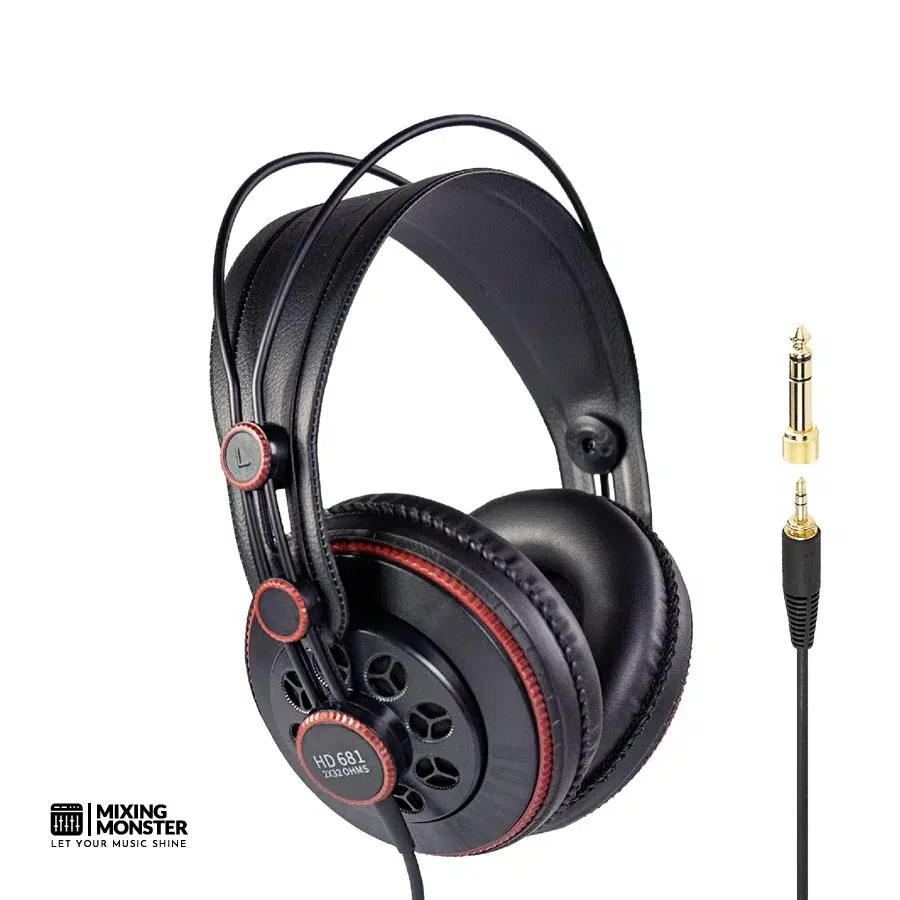
Overview:
The Superlux HD681 uses a semi-open design that delivers detailed sound and a lightweight feel. We found them great for monitoring, mixing, and casual listening—they don’t get fatiguing.
The soundstage is wide, and the audio feels balanced, rivaling headphones that cost significantly more. They aren’t perfect, but the performance for the price is hard to beat.
Pros:
- Balanced, detailed sound
- Lightweight with a self-adjusting headband
- Great price for studio-ready performance
Cons:
- Pads are a bit firm for long sessions
- Semi-open design leaks sound
- Treble can get sharp on some tracks
Unique Selling Point:
The Superlux HD681 gives you studio-level clarity and a spacious soundstage at a fraction of the usual price. That’s a big win for budget-minded creators and listeners.
Key Benefits:
- Accurate sound helps us catch details when mixing or monitoring.
- The lightweight build ensures comfort, even during extended periods.
- Affordable enough to get hi-fi quality without breaking the bank.
Pricing:
| Average Price | ~ $36 |
Review:
The Superlux HD681 impressed us right away with its open, airy sound. When we played classical and acoustic tracks, the separation of instruments felt clear and natural.
The semi-open design gave us a sense of space that closed-back headphones can’t manage. That made listening more engaging. Comfort-wise, they’re lightweight, and the self-adjusting headband worked well for us.
The ear pads felt a little stiff after a couple of hours, though. Swapping them might help, but even as they are, they were fine for more prolonged use. The bass was present without being boomy, so both orchestral music and modern tracks sounded good.
The highs leaned bright, so some recordings came off a bit sharp. For most genres, though, the detail was worth it. Build quality was better than we expected at this price.
The single-sided cable meant less tangling, and the construction seemed solid enough for daily use. We wouldn’t abuse them, but for studio or home listening, they held up in our tests.
The HD681 worked well with different devices, from audio interfaces to portable players. We didn’t need an amp to drive them, which made them practical for casual setups. They sounded best from a clean source, which brought out their resolution.
Honestly, the Superlux HD681 punches way above its price. They won’t replace high-end audiophile models, but if you’re looking for affordable, detailed sound, they’re an easy choice. We found them especially handy for mixing, casual listening, and just exploring what semi-open headphones can do—without spending a fortune.
#3 AKG K-92
Best For Studio Monitoring And Long Listening Sessions

Overview:
The AKG K92 headphones offer a balanced listening experience with a neutral sound signature. They work well for mixing, monitoring, or just kicking back with some tunes.
We found the lightweight build and self-adjusting headband surprisingly comfortable, even during marathon sessions. The closed-back design effectively blocks outside noise, making them suitable for both studio and home setups.
While the K92 leans toward professional use, it remains accessible to everyday listeners—no prior audio engineering experience is required to appreciate it.
Pros:
- Lightweight design that feels comfortable over long sessions
- Transparent and neutral sound that avoids coloration
- Sturdy build quality for the price
Cons:
- A non-detachable cable can be inconvenient
- Ear cups may feel snug for larger ears
- Limited portability due to size and cable length
Unique Selling Point:
AKG gave the K92 a neutral tuning and professional-grade drivers. That gives us a reliable tool for mixing and monitoring, and it won’t empty your wallet.
Key Benefits:
- Accurate sound reproduction helps us trust what we hear when mixing audio.
- Long-wearing comfort lets us work or listen for hours without getting tired.
- The closed-back design cuts distractions, making it easier to focus on the details.
Pricing:
| Average Price | ~ $69 |
Review:
When we first put on the AKG K92 headphones, their comfort was immediately noticeable. The self-adjusting headband required no fiddling, and the lightweight frame allowed us to wear them throughout a whole editing session without any pressure points.
The padding stays soft for extended listening. Folks with larger ears might find the cups tight, though.
Sound quality impressed us with its neutrality. Unlike bass-heavy consumer headphones, the K92 delivers an even response across the range.
This made it easier to catch subtle details in mixes, especially when balancing vocals against instruments. We appreciated that the sound remained clear and balanced, even after hours of use.
The closed-back design provided us with sufficient isolation to stay focused in a moderately noisy room. It’s not total noise cancellation, but it blocks enough distractions to make a noticeable difference.
That also helps keep sound from leaking out, which is handy if you’re recording in the same space. Build quality feels solid for the price point.
The frame doesn’t creak, and the cable’s long enough for most studio setups. The permanent cable connection is a drawback since it cannot be replaced if it becomes damaged, so this is worth considering if you plan to use them frequently on the go.
We found the AKG K92 suitable for both professional and casual use. They’re designed for mixing and monitoring, but they also sound ideal for general music listening.
The clarity and balance are effective across different genres, without causing fatigue. Not bad for something that doesn’t cost a fortune.
#4 Sennheiser HD-280 Pro
Best For Accurate Sound Monitoring And Long Listening Sessions

Overview:
The Sennheiser HD 280 Pro is a closed-back, over-ear headphone built for monitoring and critical listening. We found it delivers a very neutral sound profile, making it reliable for both music enjoyment and professional use.
Its collapsible design and rotating earcups make it easy to store and carry. The padded ear cushions surprised us with their comfort during long listening sessions.
Pros:
- Balanced sound that avoids artificial boosts
- Comfortable fit with soft padding
- Durable build suitable for daily use
Cons:
- Coiled cable feels bulky at times
- Clamping force can be tight when new
- No detachable cable option
Unique Selling Point:
The Sennheiser HD 280 Pro stands out for its accurate, linear sound reproduction. It’s a dependable choice for individuals who want an honest listening experience without any coloration distortion.
Key Benefits:
- A neutral sound signature enables us to hear music and recordings as they are intended.
- Strong noise isolation helps us focus, even in noisy environments.
- The foldable design saves space and makes it easier to bring along.
Pricing:
| Average Price | ~ $89 |
Review:
When we tried the Sennheiser HD 280 Pro, the clarity stood out immediately. These headphones strike a balance, unlike some that overemphasize bass or treble.
That balance made them especially useful for editing audio and listening to music without getting tired. The build feels solid, and the rotating earcups provide flexibility when you need to remove one side during a session.
The synthetic leather pads are soft, but they can become slightly warm over time. Still, the comfort level stayed good during long hours at the desk.
We noticed the passive noise isolation works well. Even in a busy environment, outside distractions faded once we put on our headphones.
The coiled cable is sturdy, but it adds weight and sometimes gets in the way. We prefer a detachable option for easier replacement.
The clamping force felt strong at first, but it loosened slightly after some use. All in all, the Sennheiser HD 280 Pro provides excellent value for those seeking affordable, professional-grade monitoring headphones.
#5 Yamaha HPH-MT5
Best For Balanced Studio Monitoring And Portable Use
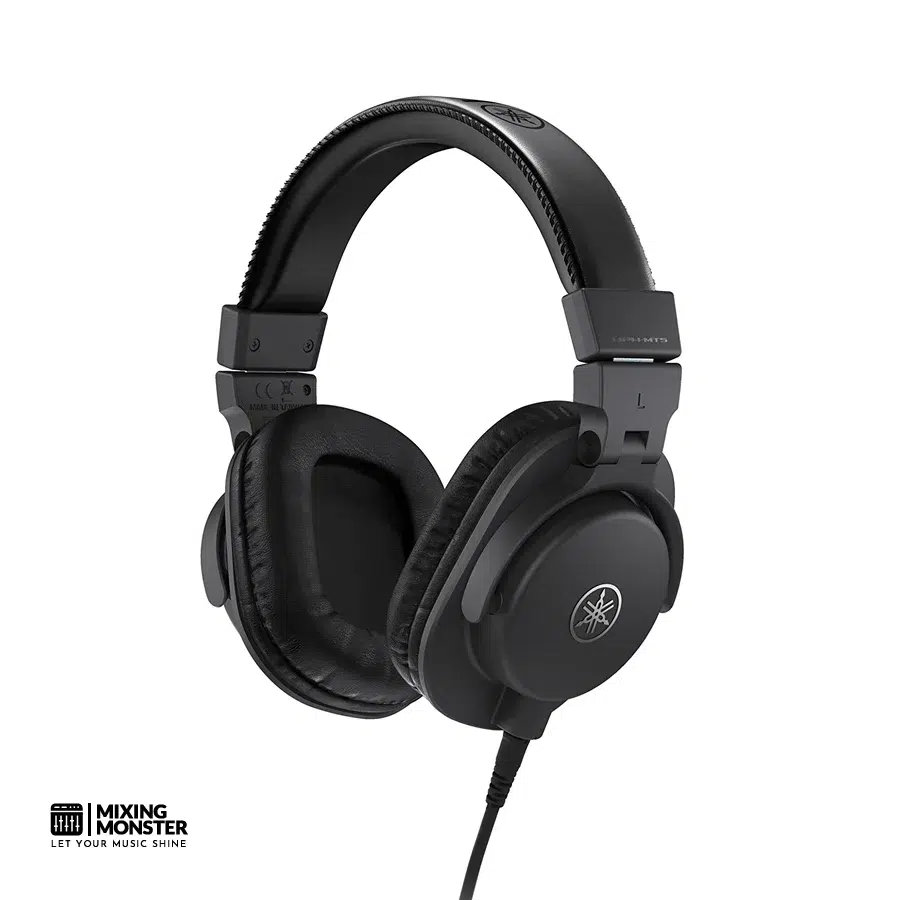
Overview:
The Yamaha HPH-MT5 Studio Headphones deliver a clean, neutral sound that works for both professional monitoring and casual listening. We found them to be lightweight and easy to wear during long sessions, thanks to their foldable design and soft synthetic leather.
The closed-back design provides solid isolation, making them practical in noisy environments. They feel sturdy enough for daily use and don’t weigh you down.
Pros:
- Balanced and accurate sound profile
- Lightweight with a foldable design for portability
- Comfortable padding for extended wear
Cons:
- Plastic build feels less premium than higher-end models
- The cable is long and not detachable
- The clamping force may feel tight at first
Unique Selling Point:
The Yamaha HPH-MT5 stands out for its accurate sound and lightweight portability. It’s a versatile option for both studio work and everyday listening.
Key Benefits:
- Reliable sound balance helps us make accurate mixing decisions in the studio.
- Lightweight construction helps keep fatigue at bay during extended use.
- The foldable design makes storage and transport easy.
Pricing:
| Average Price | ~ $99 |
Review:
We tested the Yamaha HPH-MT5 Studio Headphones in both a home studio and for casual listening. The first thing we noticed was their balanced sound—no overblown bass or harsh treble, just a clear, trustworthy mix.
The clarity across the spectrum made it easier to pick out details in recordings. Comfort’s another strong point.
At just 250 grams, they never felt heavy, even after a few hours. The padding around the ears stayed soft, and the adjustable headband made it simple to find a good fit.
The clamping force felt snug at first, but it loosened up a bit with use. Build quality is more functional than fancy.
The plastic frame is durable enough for regular handling, although it lacks the premium feel typically associated with metal-framed models. The foldable design and swivel joints made them easy to toss in a bag without worrying about damage.
The long 3-meter cable was handy for moving around a studio, but we wish it were detachable for easier replacement. It’s a single-sided cable, which keeps things tidy, but it can feel excessive outside of a fixed setup.
Isolation works well for a closed-back design. We could focus on mixing without much outside noise, and sound leakage wasn’t a problem.
That made them a good fit for both studio monitoring and private listening. If you want dependable headphones without blowing your budget, the Yamaha HPH-MT5 checks a lot of the right boxes.
Best Midrange Hifi Headphones
#6 Sennheiser HD 599
Best For Natural Listening With Open-Back Soundstage
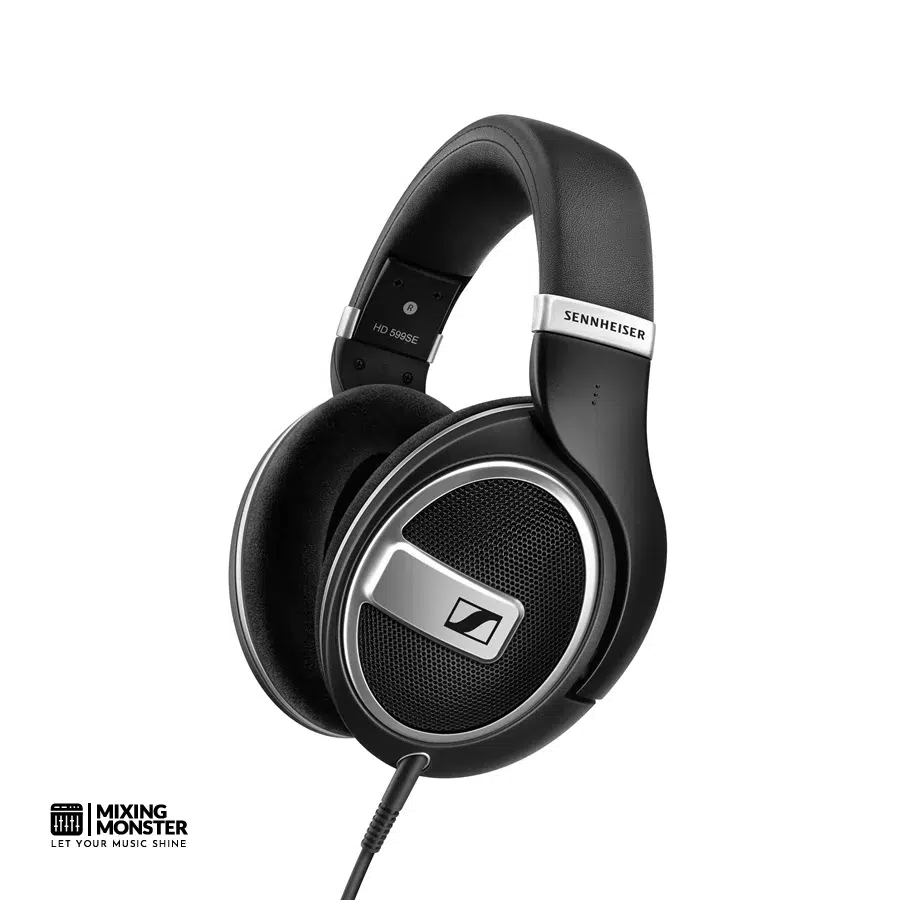
Overview:
The Sennheiser HD 599 gives you a balanced listening experience. Its open-back design creates a spacious soundstage, making it an excellent pick for home listening.
Pros:
- Clear and balanced sound across frequencies
- Comfortable ear pads for long sessions
- Detachable cables for flexibility
Cons:
- Noticeable sound leakage
- A bulky design is not ideal for travel
- Limited isolation in noisy environments
Unique Selling Point:
The open-back design of the Sennheiser HD 599 delivers a natural, wide soundstage. It feels closer to a live performance than most closed-back headphones.
Key Benefits:
- Large, soft ear pads keep things comfortable for hours and help reduce fatigue.
- The spacious audio presentation makes music feel immersive and layered.
- A detachable cable system adds convenience and helps extend the headphones’ lifespan.
Pricing:
| Average Price | ~ $147 |
Review:
When we first tried the Sennheiser HD 599, the natural sound stood out. The open-back design allows the music to breathe, making acoustic tracks and live recordings sound more lifelike.
Unlike closed-back headphones, these don’t trap the sound, giving a broader sense of space. Comfort was another highlight; the ear pads felt soft and breathable, making long listening sessions a breeze.
Even after a few hours, we didn’t experience the annoying pressure points that often come with tight-fitting headphones. The lightweight build helped, too; however, the size means you’ll probably want to leave these at home.
With the open-back design, sound leakage became obvious. People nearby could hear what we were listening to, and outside noise crept in easily.
This makes the HD 599 less ideal for commuting or busy places, but it’s perfect for quiet rooms. The detachable cables added a nice level of flexibility.
We liked having both a long cable for home setups and a shorter one for casual listening. It’s a small thing, but it makes switching setups easier without having to hunt for extra accessories.
Sound-wise, the HD 599 delivered a smooth, balanced profile. The bass was present but never overpowering, the mids stayed clean, and the highs had nice clarity.
We especially enjoyed them for jazz, classical, and acoustic music—genres where detail and separation matter. If you’re looking to enjoy music in a quiet setting, these headphones offer a solid mix of comfort and natural sound.
#7 HIFIMAN SUNDARA Closed Back
Best For Audiophiles Seeking Planar Magnetic Sound In A Closed-Back Design
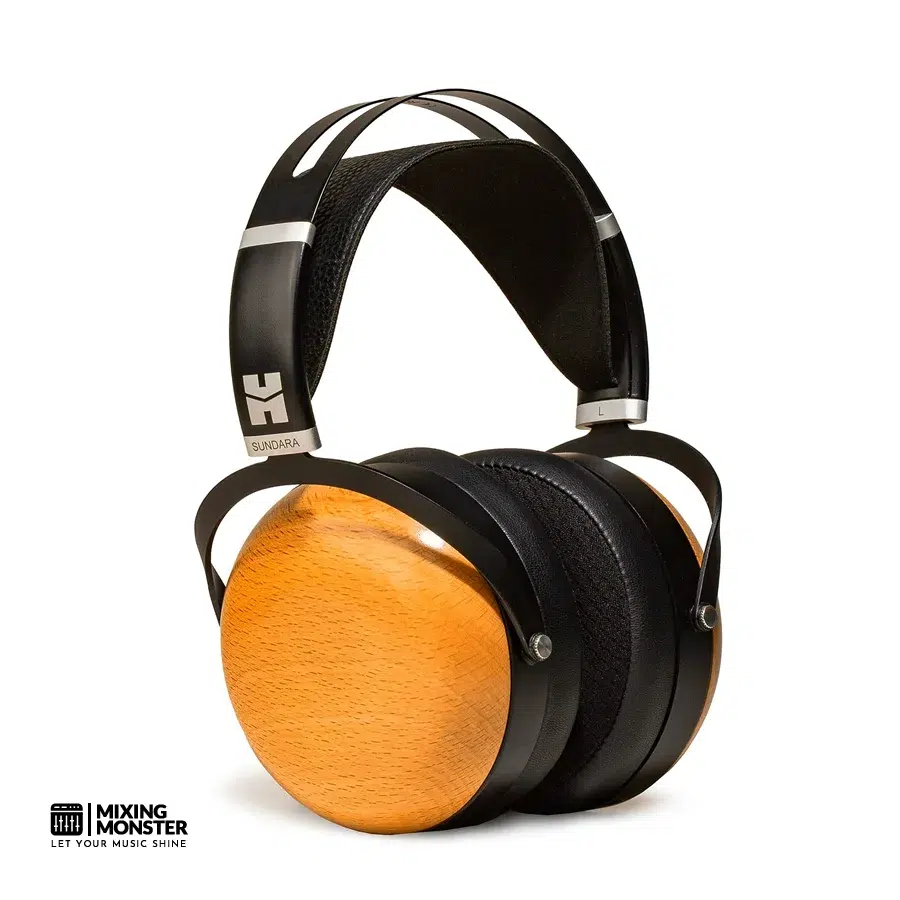
Overview:
The HIFIMAN SUNDARA Closed-Back headphones bring a refined listening experience with planar magnetic drivers and elegant wood ear cups. We’ve achieved a balanced sound that works well for both casual listening and studio use.
The closed-back design provides isolation, but the sound doesn’t feel boxed in. Comfort holds up well for long sessions, although the build could be sturdier in some areas.
They manage a good balance between performance and looks. I wish they felt more solid in hand.
Pros:
- Detailed and clear sound with strong imaging
- Comfortable fit for extended listening sessions
- Stylish wood ear cups add a premium touch
Cons:
- Build quality feels fragile in spots
- Benefits greatly from EQ adjustments
- Bass response may feel restrained for some genres
Unique Selling Point:
The HIFIMAN SUNDARA Closed-Back headphones stand out for their planar magnetic drivers paired with stealth magnets. This combo produces a super-detailed sound signature while keeping things isolated, thanks to its closed-back design.
Key Benefits:
- Planar magnetic drivers respond quickly, so you catch subtle details in recordings.
- The closed-back design helps with isolation, making them ideal for use in shared spaces or recording rooms.
- The lightweight headband and comfy ear pads mean you can wear them for hours without fatigue.
Pricing:
| Average Price | ~ $149 |
Review:
Right away, the HIFIMAN SUNDARA Closed-Back impressed us with its natural midrange. Vocals and acoustic instruments sounded clear and balanced—not overly colored.
The wood ear cups look fantastic and add a bit of warmth to the tone compared to plastic. In daily use, comfort was a standout feature.
The headband distributes weight evenly, and the ear pads stayed comfortable after hours of listening. We never felt weighed down or fatigued, which is rare for planar headphones.
The bass, though, wasn’t as punchy as some folks might want. It felt tight and accurate, but lacked the physical impact that specific genres, such as electronic or hip-hop, rely on.
We adjusted the EQ to bring out more low-end, but it’s more neutral out of the box. Build quality left us a bit torn.
The headphones look premium, but the headband and hinges could be tougher for the price. We handled them gently, as they don’t seem as rugged as some of our competitors.
Still, the detachable cable is handy, and the included adapters make switching devices easy. Where the SUNDARA Closed-Back shines is in detail retrieval.
We picked up subtle reverb trails and instrument separation that standard dynamic headphones often fail to deliver. This makes them excellent for critical listening, mixing, or just enjoying well-recorded music.
If you’re looking for a closed-back planar headphone with refined, balanced sound, these are a solid choice. They’re not perfect—especially in terms of build or bass—but the listening experience feels precise and engaging, which is worth a lot in an audiophile setup.
#8 Yamaha HPH-MT7
Best For Professional Studio Monitoring And Live Sound Applications
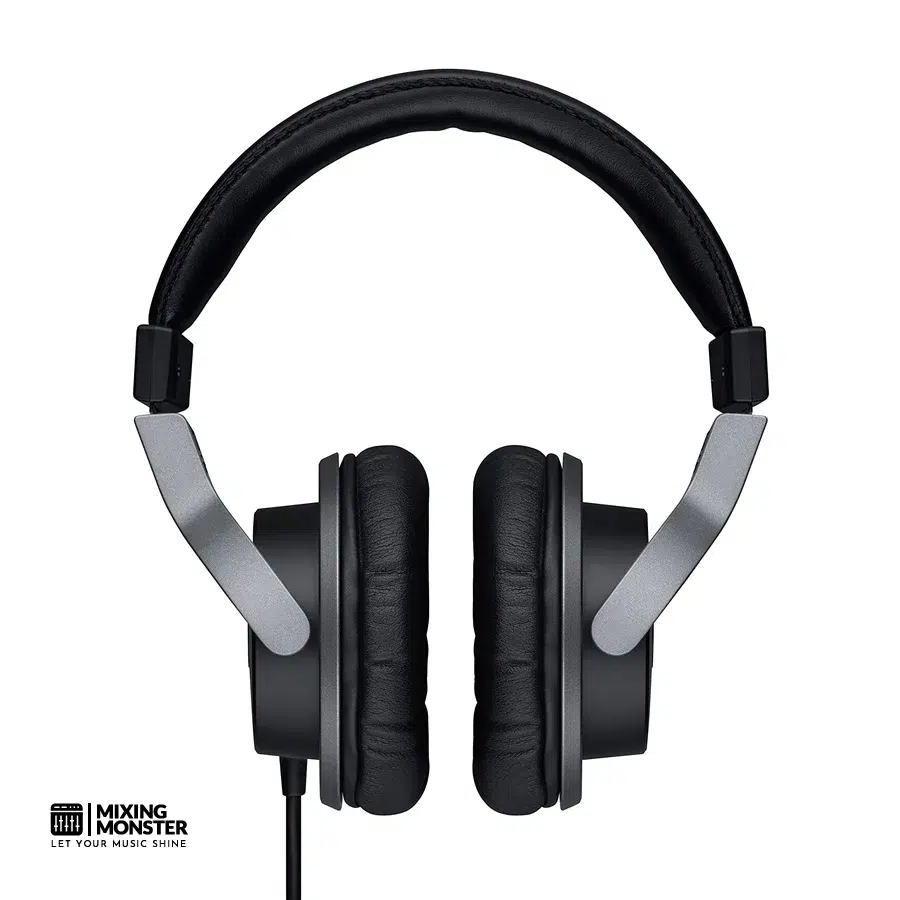
Overview:
The Yamaha HPH-MT7 Monitor Headphones deliver a flat, accurate sound signature that’s great for critical listening and studio work. We found them reliable for mixing sessions when accuracy matters more than coloration.
The solid build makes them suitable for both studio and live environments. Comfort is decent for long sessions, though not as soft as some alternatives.
Pros:
- Balanced, neutral sound that reveals fine details
- Durable construction suited for travel and live setups
- Good isolation that helps focus in noisy spaces
Cons:
- Slightly firm ear pads may cause fatigue over time
- Bass can feel restrained for casual listening
- Bulkier design compared to lighter studio headphones
Unique Selling Point:
The Yamaha HPH-MT7 stands out for its ability to reproduce a flat, high-resolution sound profile. It’s ideal for professionals who need accuracy, not boosted tones.
Key Benefits:
- Accurate monitoring enables us to make informed mixing decisions without second-guessing frequency balance.
- Strong isolation lets us work in loud environments without distraction.
- The rugged build gives us confidence carrying them between studio and live gigs.
Pricing:
| Average Price | ~ $179 |
Review:
Right away, the Yamaha HPH-MT7‘s neutral sound grabbed our attention. Unlike consumer headphones that boost bass or treble, these maintain a balanced sound, making it easier to spot subtle details in a mix.
That accuracy gave us absolute confidence when checking levels and balancing instruments. The build quality stood out too—the frame feels solid, and the hinges move smoothly without any flimsiness.
We tossed them into a bag for transport and never gave it a second thought. They handle different environments well, which is ideal for engineers who frequently transition between studios and live venues.
Comfort is good, though not perfect. The ear pads are firm, which helps with isolation, but can get tiring during marathon sessions.
We found ourselves adjusting them after a few hours to relieve pressure, but for shorter stints, they fit snugly and remained in place. Using the HPH-MT7 in a live sound setting highlighted its isolation and clarity.
We could hear what mattered, even in noisy venues, without having to crank the volume. That’s easier on the ears during extended use.
For casual listening, though, they’re not the most fun. The flat sound that helps with mixing can feel a bit plain when you want to enjoy music.
If you’re after extra bass or a warmer tone, these won’t scratch that itch. But for pro use, that neutrality is precisely what you want.
The Yamaha HPH-MT7 Monitor Headphones consistently delivered accurate results in both studio and live settings. They’re not the softest or most exciting headphones out there, but they provide a clear, honest sound that makes audio decisions easier.
#9 AKG K-712 Pro
Best For Precision Listening, Mixing, And Mastering
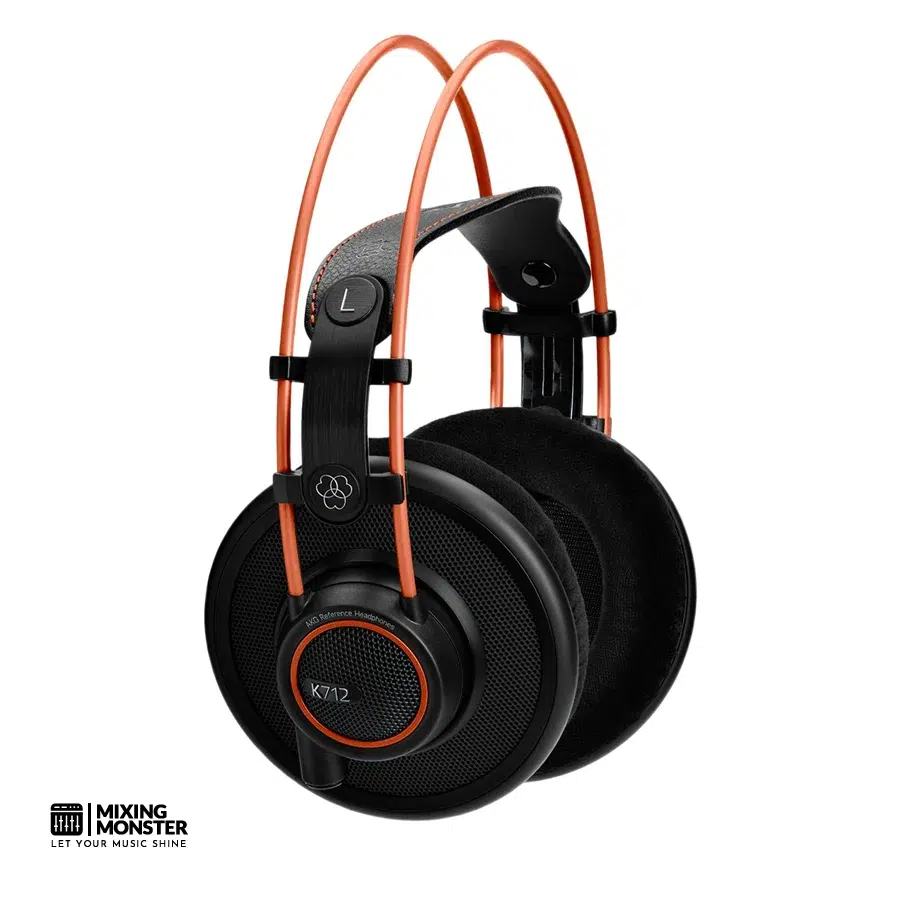
Overview:
The AKG K712 Pro headphones deliver a balanced, open sound that works for critical listening and professional audio tasks. We immediately noticed how natural the soundstage felt, making it easier to dissect the layers in a mix.
They’re lightweight and comfortable for long sessions. AKG built these with accuracy in mind, not coloration, so they suit anyone who values detail and space in their audio.
Pros:
- Spacious, natural soundstage that helps with mixing
- Comfortable fit for extended use
- Clear and balanced audio reproduction
Cons:
- Lacks noise isolation in louder environments
- Needs a good amplifier for best performance
- Bass is present, but not as strong as closed-back options
Unique Selling Point:
The AKG K712 Pro stands out for its airy, expansive soundstage, making it one of the more reliable open-back headphones for mixing and mastering at this price.
Key Benefits:
- The open design helps you identify instrument placement in a mix more easily.
- Lightweight build keeps things comfortable during extended listening or editing sessions.
- Balanced tuning provides accurate playback without excessive coloration.
Pricing:
| Average Price | ~ $300 |
Review:
When we first tried the AKG K712 Pro, the sound felt open and natural from the outset. Closed-back headphones don’t give the same sense of space, and these made listening less fatiguing and more realistic.
The mids and highs came through with absolute clarity, which is especially handy for detailed mixes. The comfort level also surprised us.
The ear pads felt soft and breathable, and the headband distributed the weight evenly. We wore them through several hours of editing without needing a break—honestly, not always the case with bulkier models.
The bass response was accurate, not overdone. This worked for mixing since it avoided exaggerating sub-bass, but if you want something super bass-heavy, these might feel restrained.
Still, the low end was present and tight, just not dominant. We tried them in different environments. In a quiet room, the detail and separation stood out, but in louder spaces, the open-back design allowed outside noise to enter.
They’re not designed for commuting or casual use in noisy environments. Using a proper amplifier made a noticeable difference.
The AKG K712 Pro headphones benefited from clean power, and the dynamics felt more lively. Without an amp, they still worked, but they didn’t quite hit their full potential.
#10 Meze Audio 99 Classics
Best For Natural, Comfortable Listening With Premium Design

Overview:
The MEZE 99 Classics immediately catch your eye with their genuine walnut earcups and timeless design. We found them easy to drive from any device, which makes them versatile for both casual and dedicated listening setups.
The self-adjusting headband added comfort during long sessions. Detachable cables made them practical for daily use. These headphones strike a balance between style, durability, and audio quality in a way that feels deliberate and thoughtful.
Pros:
- Natural, balanced sound signature that works across genres
- Comfortable fit with self-adjusting headband
- Elegant build with replaceable parts for long-term use
Cons:
- Closed-back design limits the soundstage compared to open-back models
- Not water-resistant, so not ideal for outdoor use
- Slightly bulky case for carrying around
Unique Selling Point:
The MEZE 99 Classics stand out for their handcrafted wooden earcups, which not only give each pair a unique look but also shape a warm, natural sound profile that feels organic and refined.
Key Benefits:
- The lightweight build and auto-adjusting headband reduce fatigue, making them ideal for extended listening sessions.
- Detachable Kevlar-reinforced cables add flexibility and longevity, saving us from potential cable wear issues.
- The low-impedance design allows us to use them with phones, laptops, or DACs without requiring an amplifier.
Pricing:
| Average Price | ~ $309 |
Review:
When we unboxed the MEZE 99 Classics, the craftsmanship immediately stood out to us. The walnut earcups had a smooth finish, and no two pairs looked the same, which made them feel personal.
They gave off a premium impression without being flashy, and we liked that. Listening across different genres, we noticed how natural the sound felt.
The low end had enough weight without overwhelming the mids, and the highs stayed clear without fatigue. It’s a presentation that doesn’t feel forced, so longer sessions were actually enjoyable.
Comfort was another plus.
The self-adjusting headband distributed weight evenly, and the earcups sat snugly without pressing too hard. We wore them for hours without feeling the need to take breaks, which isn’t always the case with closed-back headphones.
The modular design is a strong point. Every major part of the MEZE 99 Classics can be replaced, so you’re not left worrying about longevity.
The detachable cables felt sturdy, and the included accessories—such as the hard case and adapters—made them practical for both travel and home use.
The closed-back nature does limit the sense of space compared to open-back competitors. They also aren’t built for outdoor durability, so we wouldn’t take them on a run or into damp conditions.
But for home, office, or casual portable listening, they fit seamlessly into our routine.
Best High-End Hifi Headphones
#11 Sennheiser HD 600
Best For Critical Listening And Audiophile-Grade Music Enjoyment
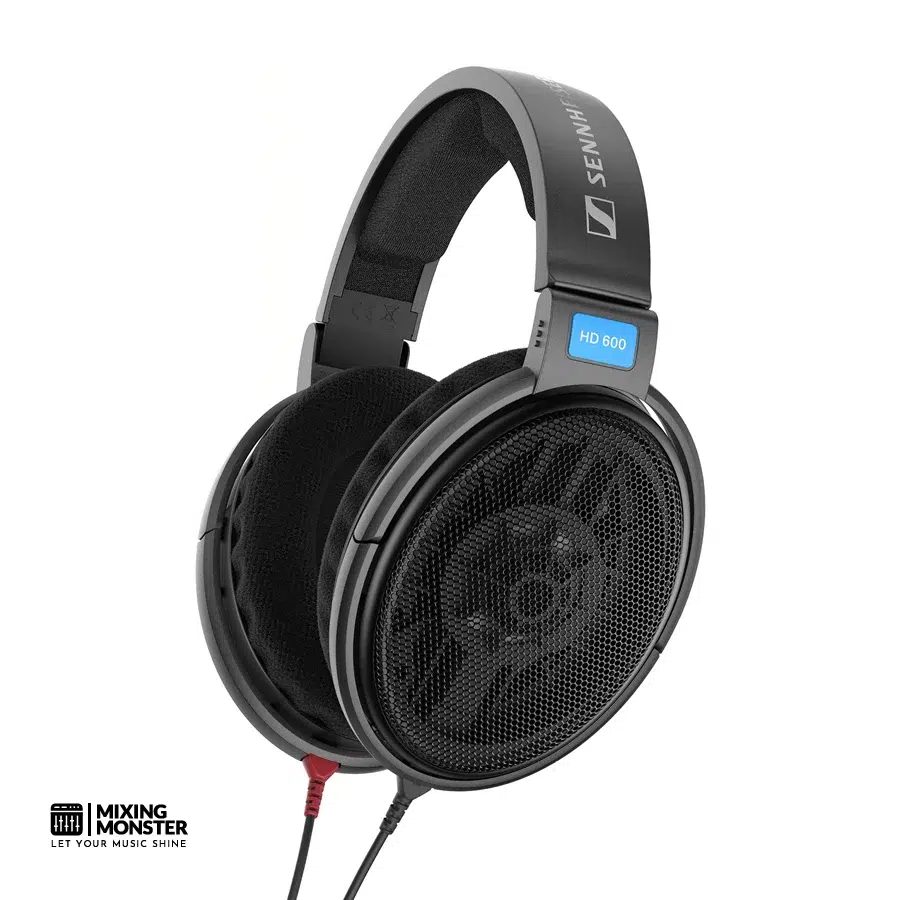
Overview:
The Sennheiser HD 600 is a highly regarded open-back headphone for discerning listeners who value accuracy and natural sound. It delivers a balanced presentation that avoids unnecessary coloration, making it suitable for both casual enjoyment and professional use.
Its lightweight build and open design make long sessions comfortable, though it does require proper amplification to really shine. The HD 600 remains a staple for anyone wanting a reliable reference headphone.
Pros:
- Balanced and natural sound profile
- Comfortable fit for extended use
- Durable build with replaceable parts
Cons:
- Needs a quality amplifier to perform well
- The open-back design leaks sound
- Lacks substantial bass impact compared to some alternatives
Unique Selling Point:
The Sennheiser HD 600 stands out for its neutral, transparent sound, making it a trusted tool for audiophiles and audio engineers wanting an honest listening experience.
Key Benefits:
- Provides accurate sound reproduction, enabling us to hear recordings as they were intended.
- The lightweight design will allow us to wear it for hours without discomfort.
- Replaceable components extend the lifespan, so we’re not forced to replace them often.
Pricing:
| Average Price | ~ $499 |
Review:
When we tried the Sennheiser HD 600, the sound felt natural and unforced from the start. Unlike headphones that exaggerate bass or treble, the HD 600 maintains a balanced sound, which is suitable for a wide range of genres.
Acoustic instruments and vocals, in particular, come through with impressive clarity. The comfort level is another highlight. The clamping force is firm but not overwhelming, and the velour pads feel soft during long listening sessions.
We spent hours using them without fatigue, which matters if you listen to full albums or work in audio production. The HD 600 feels solid without being heavy.
The detachable cable is reinforced and easy to replace, which adds to the practicality of owning these headphones for years. Sennheiser designed them with serviceability in mind, and we appreciate that.
The HD 600 does show its limitations without proper equipment.
If you plug it directly into a laptop or phone, it just doesn’t do it justice.
Once paired with a dedicated headphone amplifier, the sound becomes more open, offering improved dynamics and enhanced detail retrieval.
This means they’re best for listeners who already have—or are willing to invest in—supporting gear. The open-back design is a strength and a drawback.
It creates a spacious soundstage but also leaks sound, making it unsuitable for commuting or shared spaces. In a quiet room, though, the experience is immersive and engaging.
#12 Shure SRH1840
Best For Critical Listening And Mastering
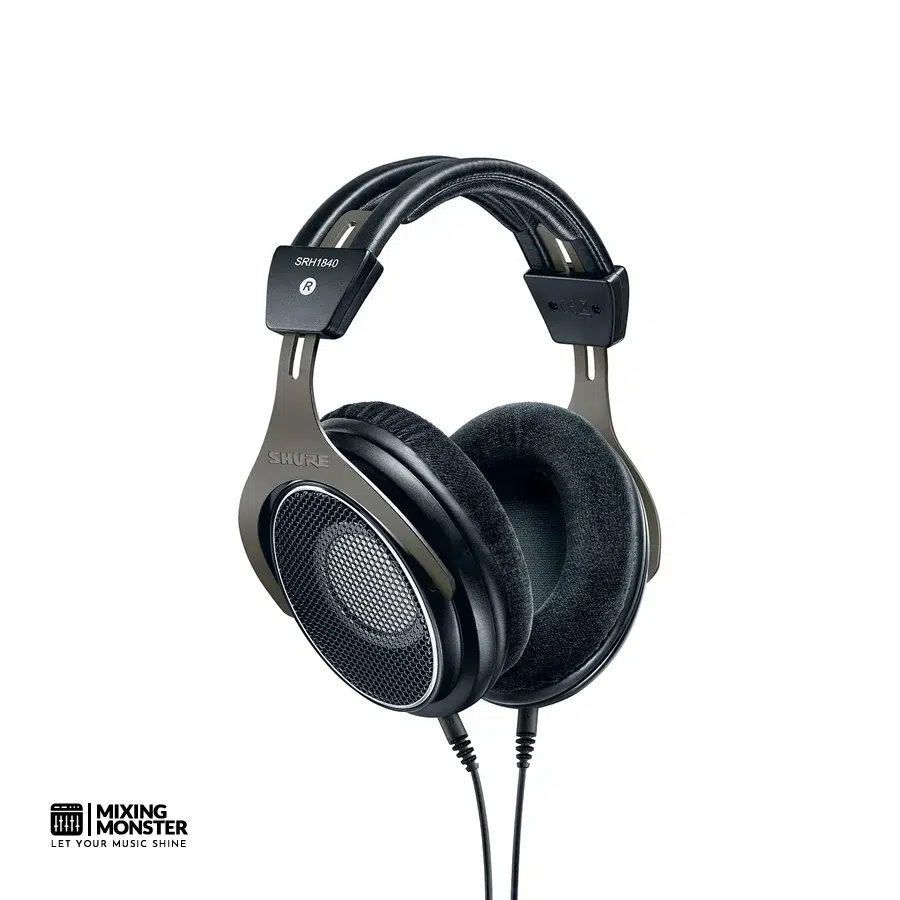
Overview:
The Shure SRH1840 delivers a natural, accurate sound that’s perfect for detailed listening. We noticed the open-back design gives music a spacious, realistic feel—great for mixing or enjoying high-quality recordings.
The headphones feel lightweight and comfortable. Shure built them with durable materials, so they are well-made and should last a while. If you want heavy bass, these won’t deliver as much impact. But for clarity and balance, they really shine.
Pros:
- Clear, neutral sound signature that reveals detail
- Lightweight build with comfy padding
- Durable materials feel solid and long-lasting
Cons:
- Bass response lacks weight for some genres
- Open-back design leaks sound and doesn’t isolate
- Higher price than some similar options
Unique Selling Point:
Shure matches the drivers individually on the SRH1840, so both earcups deliver consistent, accurate sound—a real plus for professional work.
Key Benefits:
- The lightweight frame helps reduce fatigue during extended listening sessions.
- The open-back design creates a wide, natural soundstage for critical audio work.
- Shure includes spare pads and cables, which help extend the product’s lifespan.
Pricing:
| Average Price | ~ $549 |
Review:
When we tried out the Shure SRH1840, the open, natural sound stood out right away. Unlike closed-back headphones that can feel constricting, these allow the audio to breathe, giving instruments and vocals more room to breathe.
This really helps when you’re mixing, mastering, or just listening to acoustic or classical tracks. The comfort surprised us too—the headband sits lightly and the velour pads stay soft even after hours.
The headphones never felt heavy, which made it easy to wear them for long editing sessions. Sound-wise, they keep things neutral—no boomy bass or piercing highs, which is precisely what you want for critical audio work.
If you love strong bass for electronic or hip-hop, you might find them underwhelming. Build quality feels solid, with a mix of aluminum and stainless steel that gives the SRH1840 a premium vibe without weighing you down.
Detachable cables and included spares make maintenance simple. That’s important at this price point. We did notice a lot of sound leakage from the open-back design. These aren’t ideal for commutes or shared spaces, and they don’t block out noise at all.
#13 HIFIMAN ARYA Stealth Magnet
Best For Critical Listening And Audiophile-Grade Music Enjoyment
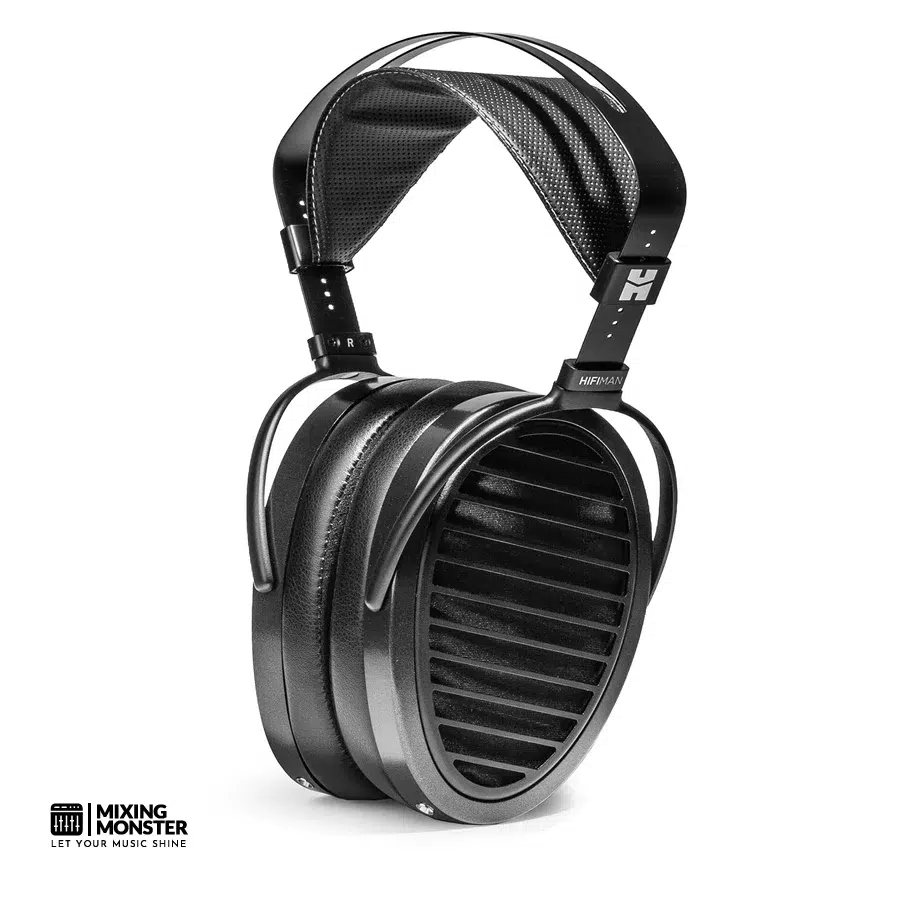
Overview:
The HIFIMAN Arya Stealth Magnet headphones provide a detailed and natural listening experience. We found that the planar magnetic drivers create a clean, open soundstage, making long sessions enjoyable.
The lightweight build and comfortable fit make them practical for extended use. They cost a lot, but for serious listeners, the performance truly justifies the expense.
Pros:
- Spacious, natural soundstage
- Comfortable fit for long sessions
- Solid build with user-replaceable cables
Cons:
- Needs a quality amplifier to sound its best
- Bulky design isn’t great for travel
- Treble can feel sharp on some tracks
Unique Selling Point:
The Arya Stealth Magnet features an acoustically transparent magnet design that minimizes distortion and maintains clarity across the entire frequency range. This driver tech gives it an edge for precise, lifelike audio.
Key Benefits:
- Enhanced clarity: The Stealth Magnet design minimizes interference, allowing us to hear subtle details.
- Comfortable wear: The lightweight frame and balanced clamping force help reduce fatigue during extended sessions.
- Long-term durability: Replaceable cables and sturdy construction mean these headphones last.
Pricing:
| Average Price | ~ $599 |
Review:
When we first put on the Arya Stealth Magnet, the openness of the sound really jumped out. Instruments felt easier to place, and orchestral or live recordings sounded especially engaging.
Compared to other headphones in this price range, the Arya felt less congested and more natural. Comfort-wise, we were pleasantly surprised—despite their size, they felt lighter than expected, and the headband spread the weight evenly.
We could listen for hours without the usual pressure points. Sound-wise, the Arya prioritizes accuracy over warmth.
Bass is there but never overwhelming, staying tight even at higher volumes. Vocals come through clearly, and the treble adds definition—though sometimes it borders on sharp, depending on the track.
The Arya Stealth Magnet really needs a strong amplifier. Plugging them into a laptop or phone doesn’t suffice.
Once we paired them with a proper DAC/amp, the headphones opened up and showed off their full dynamic range. That makes them less convenient for casual use, but it’s a treat for a dedicated setup.
Build quality feels reliable, with a mix of metal and high-grade plastic that inspires confidence. The detachable cable design adds flexibility.
The matte-black finish looks understated and professional—not flashy, but definitely serious.
#14 Fostex TH616
Best For Audiophiles Seeking Natural, High-Resolution Sound With Premium Craftsmanship

Overview:
The Fostex TH616 is a premium open-back headphone made from solid black walnut. We found the build quality exceptional, blending wood and aluminum for both elegance and durability.
Its bio-cellulose drivers and powerful magnetic circuit deliver detailed, balanced sound for critical listening. Comfort is decent for shorter sessions, though the fit might not work for everyone.
Pros:
- Beautiful walnut housing with excellent craftsmanship
- Clear, detailed sound with impressive resolution
- Lightweight design for its size
Cons:
- Ear pads may feel firm after a while
- The open-back design leaks sound
- Limited availability due to small production runs
Unique Selling Point:
The Fostex TH616 stands out with its handcrafted walnut housing and bio-cellulose driver system, blending traditional Japanese woodworking and modern acoustic engineering for a natural, detailed sound.
Key Benefits:
- Balanced audio lets us hear subtle details across a wide frequency range.
- The lightweight build makes them easier to wear for extended periods.
- Premium materials, such as walnut and rhodium-plated connectors, add durability.
Pricing:
| Average Price | ~ $618 |
Review:
When we tried the Fostex TH616, the build quality jumped out immediately. The walnut housings aren’t just for aesthetics—they enhance natural resonance, which complements the open-back design.
The craftsmanship feels intentional, with each piece fitting together smoothly. Listening to acoustic tracks, we noticed how well the headphones handled midrange tones—vocals sounded clean and uncolored, and instruments kept their natural timbre.
The highs came through in a detailed yet never harsh manner, which helped prevent fatigue during long sessions. Bass is present but not overwhelming; the TH616 keeps the low end controlled and accurate, rather than boosting it.
This works best for jazz, classical, and acoustic genres. If you want heavy bass, though, these aren’t your thing. Comfort is perfect. The vegan leather pads feel soft with balanced pressure around the ears.
Adjusting the headband helps, but folks with larger heads might need breaks on long listening days. We liked the detachable cable with rhodium-plated connectors—the cable feels sturdy and stays secure even with frequent plugging and unplugging.
This adds to the overall reliability. For anyone who cares about clarity and craftsmanship, the TH616 delivers a refined experience.
#15 Meze Audio 109 Pro
Best For Natural Sound And Long Listening Sessions
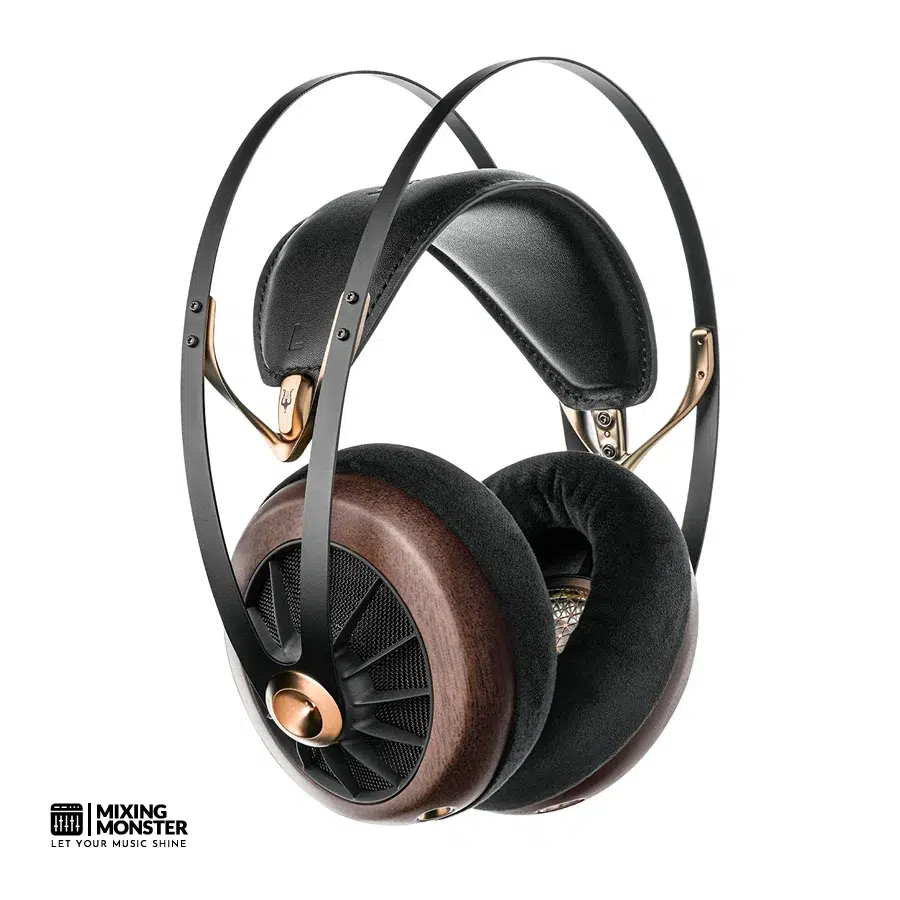
Overview:
The MEZE AUDIO 109 PRO offers a refined open-back listening experience, and its design complements it just as well as its sound. We noticed the walnut wood earcups look unique—warm, inviting, and honestly, a pleasure to use daily.
The lightweight frame and self-adjusting headband kept us comfortable for hours. These headphones strike a balance between musicality and detail, allowing you to use them for both critical listening and casual music sessions.
Pros:
- Distinctive wood earcups give each pair a unique look
- Comfortable fit with self-adjusting headband
- Smooth, natural sound signature that works across genres
Cons:
- The open-back design leaks sound into the room
- Bass may feel restrained compared to closed-back models
- Large size makes them less portable
Unique Selling Point:
The MEZE AUDIO 109 PRO stands out with handcrafted walnut earcups. They don’t just look gorgeous—each pair ends up with its own character.
Key Benefits:
- Comfortable wear: The self-adjusting headband distributes weight evenly, preventing pressure points from building up during extended sessions.
- Easy to drive: With low impedance, we plugged them straight into laptops and portable devices—no amp needed.
- Durable design: Every part is replaceable. That’s a relief, since glue-based builds usually don’t last as long.
Pricing:
| Average Price | ~ $799 |
Review:
When we first tried on the MEZE AUDIO 109 PRO, they sat naturally on the head. The headband did its thing with no hassle, and the vegan leather felt soft—none of those hot spots you get with heavier headphones.
The walnut finish gave them a premium, understated vibe. They feel more like a crafted instrument than a tech gadget, which is honestly refreshing.
Listening across genres, we heard a relaxed tuning. Vocals sat a touch back, but instruments came through with absolute clarity and warmth.
The open-back design created a sense of air and space. Of course, sound does leak out, so using them in shared spaces might not be ideal.
We liked how easy they were to drive. Even plugged straight into a laptop, the 109 PRO delivered a full, engaging sound—no external amp required.
Comfort lasted for hours. The self-adjusting headband and breathable pads really made a difference, and we didn’t feel the urge to take them off as often as with heavier headphones.
Durability impressed us. MEZE uses screws and replaceable parts instead of glue, which gives us confidence that these headphones will last with proper care.

2. What Is A Hifi Headphone?
When we discuss Hi-Fi headphones, we refer to headphones designed to deliver high-fidelity sound. That means the audio stays as close to the original recording as possible—no weird distortion or fake coloration.
Hi-Fi headphones usually offer a wide frequency response, allowing you to hear both deep bass and crisp highs. They utilize high-quality drivers and materials to ensure clarity and accuracy.
We compare them to standard headphones by looking at a few basics:
| Feature | HiFi Headphones | Standard Headphones |
|---|---|---|
| Sound Accuracy | Neutral, detailed | Often boosted bass/treble |
| Build Quality | Premium materials | Mixed, often plastic-heavy |
| Listening Purpose | Critical, immersive | Casual, everyday use |
You’ll find that most HiFi headphones are either open-back or closed-back. Open-back headphones offer a more natural and spacious sound, but they also tend to leak audio. Closed-back keeps things private but can sound less airy.
Many HiFi headphones perform best with a dedicated amplifier or DAC. Some models have higher impedance or sensitivity, and standard devices may struggle to drive them effectively.
HiFi headphones focus on accuracy, detail, and build quality. They’re not your run-of-the-mill consumer cans.

3. Essential Accessories To Complement Your Hifi Headphones
The right accessories can significantly enhance the experience of using our Hi-Fi headphones. Sometimes it’s the little things that make long listening sessions more comfortable or keep our gear in top shape.
Replacement Earpads are a must over time. Pads wear out, and that affects both comfort and sound. Swap in velour, leather, or hybrids to fine-tune the fit and sound to your liking.
A dedicated headphone stand keeps headphones safe and out of the way on the desk. This helps prevent accidental drops and maintains the headband’s shape.
We also appreciate a high-quality headphone cable. If your headphones allow cable swapping, upgrading to a balanced or higher-quality cable can help reduce interference and improve signal quality.
Portable cases are handy for travel. Hard-shell cases provide the most protection, but soft pouches are sufficient for lighter use.
For maintenance, cleaning tools like microfiber cloths and gentle sprays keep things looking and sounding good. Regular cleaning prevents grime from accumulating and affecting performance.
| Accessory | Purpose | Example Benefit |
|---|---|---|
| Replacement Earpads | Comfort & sound adjustment | Longer listening sessions |
| Headphone Stand | Safe storage | Prevents wear and damage |
| Quality Cable | Improved connection | Reduced interference |
| Portable Case | Travel protection | Keeps headphones secure |
| Cleaning Tools | Maintenance | Extends product lifespan |

4. Hifi Headphones Buying Guide
When selecting hi-fi headphones, we always prioritize sound quality first. A balanced frequency response allows us to hear details clearly without any range dominating.
Build quality matters too. Durable materials mean headphones last longer, so check the headband, ear pads, and cable design for sturdiness.
Comfort is a big deal. Lightweight frames and breathable padding help avoid strain, especially during long sessions.
You’ll need to choose between open-back and closed-back styles. Open-back models sound more natural but leak audio, while closed-back designs give better isolation.
Connectivity matters for daily use. Wired headphones usually sound more consistent, but wireless ones are sometimes more convenient.
| Feature | Why It Matters | What to Look For |
|---|---|---|
| Sound Quality | Accurate audio reproduction | Balanced frequency response |
| Comfort | Long listening sessions | Lightweight, padded design |
| Build Quality | Durability and longevity | Sturdy materials, replaceable parts |
| Design Type | Listening environment | Open-back vs. closed-back |
| Connectivity | Usage preference | Wired or wireless options |
Impedance and sensitivity are worth thinking about. High-impedance headphones often require an amplifier, while lower-impedance ones typically work fine with phones and laptops.
And yeah, budget matters. Deciding what’s most important to you makes it easier to find the right fit without overspending.
5. Finding Your Perfect Hifi Headphones: Key Takeaways
When we look for hi-fi headphones, we balance comfort, sound quality, and budget. Each one shapes how practical and enjoyable the headphones are for everyday use.
Sound signature deserves attention. Some headphones boost bass, while others highlight detail and clarity. Matching the sound profile to our listening preferences makes a big difference.
Comfort is crucial for long sessions. Check ear pad material, headband design, and overall weight. Lighter builds with soft pads usually help reduce fatigue.
Price and value matter, too. More expensive models may offer better components, but many mid-range options also deliver excellent performance.
| Key Factor | What to Look For | Why It Matters |
|---|---|---|
| Sound Signature | Balanced, bass-heavy, or bright | Matches our music preferences |
| Comfort | Lightweight, soft padding | Reduces strain from long use |
| Build Quality | Durable materials, replaceable parts | Extends product lifespan |
| Price Range | Entry, mid, or high-end | Aligns with budget and needs |
Consider open-back versus closed-back designs as well. Open-back headphones sound more natural but tend to leak audio, while closed-back models isolate sound better in noisy environments.
By keeping these points in mind, we can narrow down our selection to headphones that suit both our style and practical needs.
Our Top Picks For The Best Hifi Headphones
Best Budget Hifi Headphones
- Behringer HPM1000-BK
- Superlux HD-681
- AKG K-92
- Sennheiser HD-280 Pro
- Yamaha HPH-MT5
Best Midrange Hifi Headphones
- Sennheiser HD 599
- HIFIMAN SUNDARA Closed Back
- Yamaha HPH-MT7
- AKG K-712 Pro
- Meze Audio 99 Classics
Best High-End Hifi Headphones
- Sennheiser HD 600
- Shure SRH1840
- HIFIMAN ARYA Stealth Magnet
- Fostex TH616
- Meze Audio 109 Pro

FAQ
1) What makes headphones "hi-fi"?
Hi-fi headphones deliver audio with high accuracy and low distortion. They aim to reproduce sound as closely as possible to the original recording, with a wide frequency response and a wealth of detail.
2) What is the difference between hi-fi headphones and studio headphones?
Hi-fi headphones prioritize an enjoyable and natural listening experience. Studio headphones, on the other hand, usually prioritize neutrality and accuracy for mixing and monitoring.
3) Do I need a headphone amplifier for hi-fi headphones?
Some hi-fi headphones have high impedance and benefit from a dedicated amplifier. An amp ensures they receive enough power to sound their best, especially for models designed for critical listening.
4) Are open-back or closed-back headphones better for hi-fi listening?
Open-back headphones give you a wider, more natural soundstage. They do let sound escape, though, so people nearby might hear what you’re listening to.
Closed-back headphones block out more noise and usually deliver punchier bass. If you’re in a noisy room or want some privacy, closed-back might be the way to go.
5) What role does comfort play in choosing hi-fi headphones?
Comfort really matters if you plan on listening for hours. Ear pad material, headband shape, and even the weight can make or break the experience.
Some headphones feel great at first, but start to pinch or get heavy after a while. Try them on, or at least read a few reviews from individuals who’ve worn them for longer sessions.
6) Can wireless headphones be considered hi-fi?
Wireless headphones sound good these days. Still, most of them use compression and have limited bandwidth. Some pricier models support advanced codecs that offer some assistance.
However, wired headphones usually provide the most reliable high-fidelity experience.

